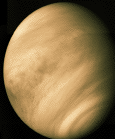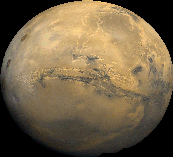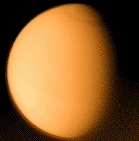

Space...where
do we go from Earth?
Assignment: You and
your team are to research one of five planetary environments that NASA is
considering to colonize. The task is to develop an argument to persuade
NASA to select your planetary environment in which to build the space colony.
You may want to begin this assignment by researching Earth's own physical
environment in which to compare to your chosen environment. A Planetary
Environment Research Form will be provided to assist you in your task.
Planetary Environment Selections:

|
Europa, fourth largest satellite of Jupiter, has gained the rank of one of the highest priority targets for an outer Solar System exploration mission. If liquid water were to exist on Europa, it would not be unreasonable to speculate on the existence of life. |

|
The Apollo program was designed to land humans on the Moon & bring them safely back to Earth. The six missions that landed on the Moon returned a wealth of scientific data and almost 400 kilograms of lunar samples. Experiments included soil mechanics, meteoroids, seismic, heat flow, lunar ranging, magnetic fields, and solar wind experiments. |

|
Venus, second planet from the Sun, has sometimes been called Earth's sister planet because the two are so similar in size and mass. But there the similarities end. Venus is covered by thick, rapidly spinning clouds that trap surface heat, creating a scorched greenhouse-like world with temperatures hot enough to melt lead, and pressure so intense that standing on Venus would feel like the pressure felt 3,000 feet deep in Earth's oceans. |

|
Mars, the Red Planet, has inspired wild flights of imagination over the centuries, and intense scientific interest. Mars has shown itself to be the most Earth-like of all the planets; it has polar ice caps that grow and recede with the change of seasons, and markings that appear to be similar to water channels on Earth. |

|
Titan is the largest moon of Saturn and the 2nd largest moon in the solar system, rivaled only by Jupiter's moon Ganymede. Before the Voyager encounters, astronomers suspected that Titan might have an atmosphere. Scientists also believed they might find liquid seas or pools of methane or ethane; water would be frozen due to Titan's low surface temperature. |
|
|
|
|
|
|
|
|
|
|
|
|
|
|
|
|
JPL Europa info Water on Europa |
|
|
The Earth's Moon Ice on the Moon Water on Moon & Mars |
|
|
Possibility of Life on Venus |
|
|
Pathfinder Images of Mars Water on the Moon & Mars |
|
|
|